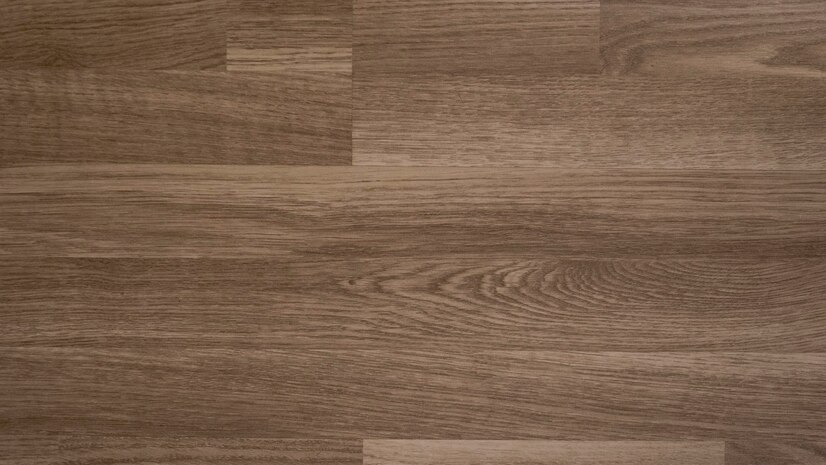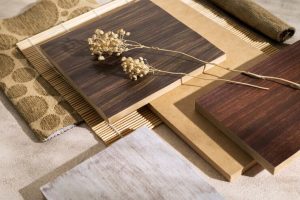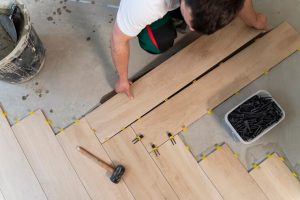The thickness of timber flooring is critical when embarking on the journey to enhance your living space with the timeless charm of solid or engineered oak. At Kruger Carpets, we offer a range of options, and understanding the right thickness for your needs is key. Let’s delve into the factors influencing the thickness choice and what makes each option suitable for various applications.
What Is Timber Flooring: A Comprehensive Overview
Timber floor, a timeless and popular choice for both structural and aesthetic purposes, is a product crafted from timber, renowned for its unique characteristics. Each plank or board is typically composed of a single piece of hardwood, approximately 0.75 inches thick, with variations in width adding to its diverse appeal.
Two main types of timber floors: solid and engineered:
Solid Timber Floor: This type consists of a single piece of wood throughout its thickness, rendering it exceptionally durable and long-lasting. The advantage lies in its ability to be sanded and refinished multiple times, ensuring a prolonged lifespan.
Engineered Timber Floor: Engineered timber features a top layer of solid wood adhered to 2-10 layers of other wood types, commonly referred to as ply layers. These layers are strategically arranged in different directions to enhance stability, mitigating the natural expansion and contraction associated with temperature and humidity fluctuations.
Benefits of Timber Flooring NSW:
- Aesthetics:Timber floors are celebrated for their warm, classic aesthetic, imparting a natural and earthy beauty to any space, making them a pivotal element in home decor.
- Durability:Renowned for robustness, well-maintained timber floors can endure for decades, ensuring a lasting investment.
- Value: Homes with expensive or cheap timber flooring often boast a higher resale value, attributed to the perceived high quality and longevity of wood floors.
- Hygiene: Timber floors create an inhospitable environment for allergens, dust, or parasites, making them a healthier choice for allergy-prone individuals.
- Versatility: With a myriad of timber flooring colours, species, styles, and finishes, it offers homeowners the flexibility to choose a unique look that complements individual taste and decor.
How Thick Is Timber Flooring?
For solid oak flooring enthusiasts, we provide boards in two thickness options – 20mm and 14mm. The 20mm boards cater to structural flooring needs, are suitable for installation over joists or existing wooden subfloors, and can even be glued to concrete subfloors.
On the other hand, the 14mm boards are designed for overlay systems, making them ideal for replacing carpets laid over plywood subfloors, where room height can sometimes be a concern.
Engineered Oak Flooring: A Versatile Solution for Diverse Requirements
In the realm of engineered oak flooring, we offer a versatile solution for diverse requirements. Our 20mm engineered boards boast a 6mm solid oak top layer bonded to 14mm of Siberian birch ply, providing a robust foundation. These engineered boards can be laid similarly to solid oak flooring, offering flexibility in installation methods.
Navigating the Decision: Choosing Between Thinner and Thicker Engineered Oak Boards
When choosing between thinner and thicker engineered oak boards, factors like stability, durability, and cost come into play. Thicker boards, ranging from 18mm to 21mm, may be preferable for commercial spaces or areas with heavy foot traffic, ensuring enhanced stability. However, for most residential applications, a 14mm to 15mm thickness strikes a balance between stability and affordability.
Moving beyond oak, the world of engineered timber floors in Australia opens up a plethora of options. Thicknesses typically range from 10mm to 21mm, with considerations for subfloor conditions, expected foot traffic, and personal preferences playing a pivotal role in the decision-making process.
Concrete Subfloors and Stability: Selecting the Right Thickness for Engineered Timber Flooring
Concrete subfloors, prevalent in many Australian homes, often dictate the choice of a thicker engineered timber floor, around 14mm to 22mm, offering improved stability and sound insulation. High-traffic areas benefit from thicker planks, providing durability and ensuring the flooring maintains its pristine condition despite daily wear and tear.
Underfloor heating compatibility is another factor influencing thickness choice, with thinner options, approximately 10mm to 14mm, proving more suitable for efficient heat transfer.
If noise reduction is a priority, opting for thicker engineered timber floors with acoustic underlays can create a quieter and more comfortable living environment.
Beyond practical considerations, the aesthetic impact of thickness on the overall look and feel of a space is worth noting. Thicker planks often exude a more luxurious, solid feel, while thinner options may align better with contemporary or minimalistic designs.
Balancing these considerations with budget constraints is crucial, as thicker engineered timber floors tend to be more expensive, with potential additional costs for installation labour and preparation.
The ideal thickness for timber floors in Australia is a nuanced decision influenced by a combination of factors. By carefully assessing your specific needs and understanding the impact of thickness on performance, aesthetics, and costs, you can confidently select the perfect timber floors for your Australian home or office.
At Kruger Carpets, we are here to guide you through this journey, offering quality options that align with your preferences and elevate the beauty of your space. Visit us today to explore the flooring world and find the perfect fit for your unique requirements.
Considerations When Choosing Timber Floors:
- Cost: The timber floor tends to be pricier than alternative flooring types, considering both material and installation expenses.
- Maintenance: While robust, regular care, such as sweeping, vacuuming, immediate spill cleanup, and periodic refinishing, is essential to preserve the aesthetic appeal.
- Installation:Professional expertise is advisable for timber flooring installation, given its intricacies and the potential for a time-consuming process.
- Environmental Impact:Prioritize timber sourced from sustainably managed forests, checking for certifications like the Forest Stewardship Council (FSC) or Programme for the Endorsement of Forest Certification (PEFC).
In conclusion, timber floors remain a favoured choice for homeowners, celebrated for their aesthetic allure, durability, and intrinsic value. However, careful consideration of factors such as cost, maintenance, installation intricacies, and environmental impact is imperative before determining if it aligns with your home’s unique requirements.
Kruger Carpets – Your Premier Destination for Exceptional Timber Flooring Sydney
Discover the unparalleled beauty and enduring quality of timber floors at Kruger Carpets. Our extensive range includes exquisite Australian hardwood options like Spotted Gum, Tasmanian Oak, Blackbutt, Jarrah, and Sydney Blue Gum – each boasting a rich history of over a century in Australian homes.
Additionally, we offer the epitome of luxury with European Oak timber floor, available in 12mm, 14mm, 15mm, 20mm, and 21mm thicknesses. Transform your space with the timeless elegance of European Oak, known for its wide planks and unmatched sophistication.
Immerse yourself in the beauty of Australian hardwood with our engineered Australian timber flooring collection. Find the perfect blend of tradition and modernity for your home.
Visit our showroom, the ultimate destination to explore and select the perfect timber flooring for sale. Kruger Carpets is not just a store; it’s an experience where quality meets craftsmanship.
Explore or step into our showroom and let your home transformation begin!








